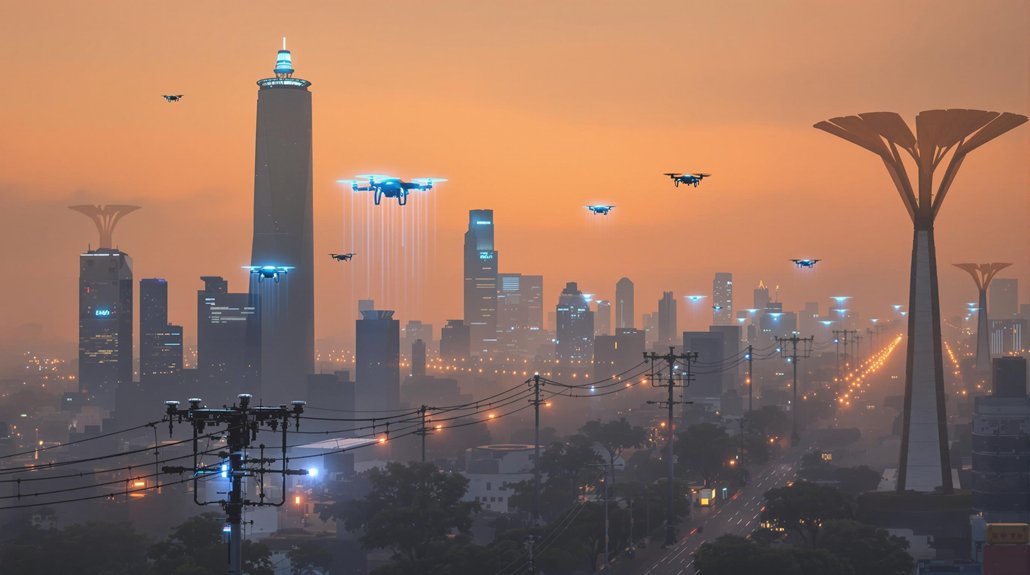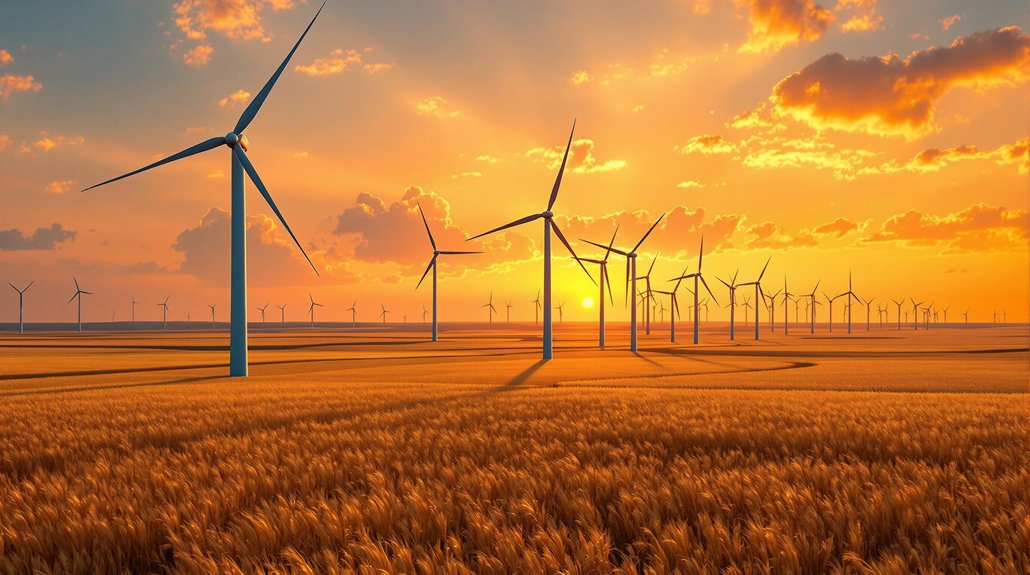The future of pollution looks pretty grim. Global air pollution deaths are expected to jump 50% by 2050, with climate change making everything worse. New threats like microplastics and “forever chemicals” are joining the party, while good old fossil fuels keep pumping out toxins. There’s hope in electric vehicles and smart cities, but let’s be real – we’re in for a rough ride. The solutions exist, but time isn’t exactly on our side.

While scientists have made remarkable strides in cleaning up our skies, the future of air pollution looks grimmer than a coal miner’s lungs. Global air pollution deaths are projected to spike 50% by 2050, and climate change isn’t exactly helping matters. The burning of fossil fuels remains the primary contributor to this warming crisis. Warming temperatures are set to worsen air quality, boost ozone levels, and turn wildfires into an even bigger headache than they already are.
As if traditional pollutants weren’t enough to worry about, we’re now dealing with an entirely new cast of atmospheric villains. Microplastics are floating around like invisible confetti, nanoparticles from our fancy consumer products are taking flight, and there’s even antibiotic-resistant bacteria hanging out near farms and hospitals.
Oh, and those PFAS “forever chemicals”? They’re showing up in rainwater everywhere, like unwanted party guests who refuse to leave.
The tech world isn’t sitting idle, though. Air purification systems are getting smarter and cheaper, artificial trees are being developed to capture carbon, and smart cities are popping up with built-in pollution-fighting features. Electric vehicles are finally having their moment, and AI is helping us track all this mess more effectively than ever before.
On the policy front, countries are finally getting serious about cleaning up their act. Carbon pricing is spreading like wildfire (poor choice of words, perhaps), and international cooperation on pollution is actually becoming a thing. The Clean Air Act has been driving pollution reduction for over 50 years. Recent data-driven insights have helped policymakers make more effective environmental decisions.
Meanwhile, the health impacts are becoming impossible to ignore. Air pollution is linked to everything from cognitive decline to children’s stunted lung development, and it’s costing us trillions in healthcare and lost productivity.
The demographic picture isn’t helping either. More people are cramming into cities, our aging population is more vulnerable to pollution’s effects, and climate migration is shuffling the deck on who breathes what.
Scientists are still scratching their heads about some things, like how multiple pollutants interact and what long-term exposure to newer contaminants might do to us. But one thing’s crystal clear: the air we breathe is changing, and not in a good way.








